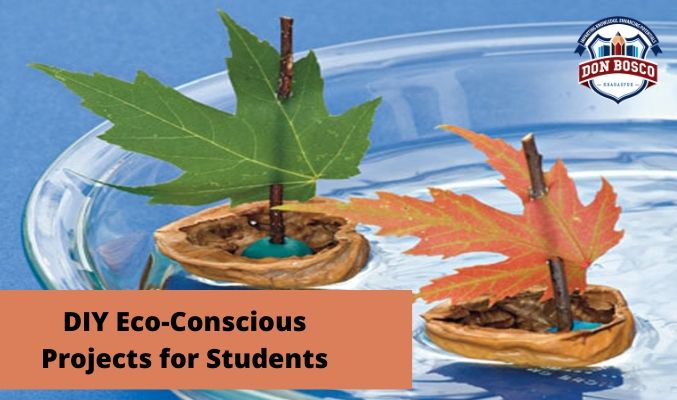
DIY Eco-Conscious Projects for Students
Whilst, we are social distancing and staying at home, an amazing phenomena is occurring outside. The earth is finally healing. Hence, make the most of your time indoors and help your kid’s be closer to Mother Nature by doing amazing environmental friendly projects. These are educational and easy too. This is the best way to help your kid’s connect to the planet too.
Home-made backyard ecosphere
1. Thoroughly clean an airtight glass container (you can use a mason jar). The jar needs to be clean and dry to avoid any mold growth.
2. Add a layer of about 1 – 2 inches of clean sand or clean gravel to the bottom of the jar and a thin layer of about 0.5 inches of activated charcoal on top of the sand. However, the charcoal layer is optional.
3. Add a layer of about 2 – 4 inches of draining soil and some decorative items like a rock or piece of wood along with some plants and moss.
4. You can add very small slow growing plants that can tolerate warm, humid, environments. Sheet moss is also a nice decorate touch. You could also add a bug or two, like a cricket or beetle or worm. These bugs will provide CO2 for your plants.
5. Water your biosphere. Give your biosphere enough water so that the sand layer is fairly saturated. You actually won’t need very much water to achieve this so be careful when adding the water.
6. Cap your biosphere as once you have watered your biosphere, it is ready to self-regulate.
7. Place your biosphere near a window but not under direct sunlight as the inside will get too hot. You may also notice a lot of condensation building up inside your biosphere at first and this means that you may have watered it too much. Just open the lid for a day and let some of the water evaporate.
Recycled paper Mache bowl
1. Using scissors, cut your newspaper into 1-inch strips.
2. Make your paper mache paste mixture by mixing together one part flour and two parts water in a large bowl. Stir it well until it’s a smooth, thin consistency.
3. Grab a glass kitchen bowl to be used as the mold for your paper mache.
4. Completely cover the outside of the bowl with aluminum foil. Apply some cooking oil on the outside of the foil-covered bowl as it will make it much easier to remove the paper mache from the bowl.
5. Dip the strips of newspaper into the paste and apply it on top of the bowl. Repeat this process until the whole bowl is covered.
6. Allow the bowl to dry overnight. Once completely dry, carefully pop the paper mache off the bowl, separating the foil carefully.
7. Finally, use acrylic paints to decorate the bowl any way you like.
One of the top English medium schools in Kharagpur also teach such innovative crafts to help the students learn about their surroundings better. If you want to get your kid’s admitted for the next session, please visit the website and fill out the form to know more.
